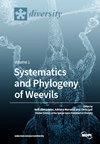德国南部濒危古剑兰(Gladiolus palustris)多样化的网状遗传结构对保护策略的发展产生了影响
IF 2.1
3区 生物学
Q2 BIODIVERSITY CONSERVATION
引用次数: 0
摘要
沼泽剑兰(Gladiolus palustris)生长在中欧潮湿的草原上,是一种极为罕见的高度濒危物种。在过去的几十年里,栖息地的不断丧失、种群的破碎化、干旱以及全球变暖导致的年平均气温升高都导致了其种群数量的严重下降。此外,与其他物种(如G. imbricatus和G. illyricus)的杂交以及基因枯竭可能对该物种的生存构成重大威胁。本研究的重点是表征德国南部和西南部物种的主要基因库。利用分子AFLP标记和ITS DNA测序,本研究表明,中欧地区过去的杂交和渐渗入比以前认为的要广泛,这对针对分类定义的物种的保护策略提出了挑战。在德国西南部的莱茵河地区(上莱茵河流域),在过去的30年里,出现了各种分散的G. palustris种群,它们被认为是由人类引入的。该地区(包括德国联邦巴登-符腾堡州和莱茵兰-普法尔茨州)的引进种群可能来自康斯坦茨湖附近的一个大种群。因此,考虑到这些新种群在该地区的长期存在,该研究建议促进和保护这些新种群。此外,研究还提出,自然发生的杂交种和渐渗种群也应该是保护工作的主要目标。本文章由计算机程序翻译,如有差异,请以英文原文为准。
The Diverse Reticulate Genetic Set-Up of Endangered Gladiolus palustris in Southern Germany Has Consequences for the Development of Conservation Strategies
Gladiolus palustris (marsh Gladiolus) of wet grasslands is an extremely rare and highly endangered species in Central Europe. Ongoing loss of habitat, population fragmentation, drought, and higher mean annual temperatures caused by global warming have all contributed to a severe decline in its population over the past few decades. Additionally, hybridization with other species, such as G. imbricatus and G. illyricus, and genetic depletion may pose a significant threat to the species’ survival. The focus of this study is to characterize major gene pools of the species in southern and southwestern Germany. Using molecular AFLP markers and ITS DNA sequencing, this study shows that past hybridization and introgression in Central Europe are more extensive than previously thought, posing a challenge to conservation strategies targeting taxonomically defined species. The region of the Rhine River in southwestern Germany (Upper Rhine Valley) has seen the emergence of various scattered populations of G. palustris over the past three decades, which are believed to have been introduced by humans. Introduced populations in this area (comprising the German Federal States of Baden–Württemberg and Rhineland–Palatinate) likely descend from a large source population near Lake Constance. Therefore, the study suggests promoting and protecting these new populations, given their long-standing presence in the region. Furthermore, the research proposes that naturally occurring hybrids and introgressed populations should also be the primary target of conservation efforts.
求助全文
通过发布文献求助,成功后即可免费获取论文全文。
去求助
来源期刊

Diversity-Basel
Environmental Science-Ecological Modeling
CiteScore
3.40
自引率
12.50%
发文量
925
审稿时长
11 weeks
期刊介绍:
Diversity (ISSN 1424-2818) is an international and interdisciplinary journal of science concerning diversity concept and application, diversity assessment and diversity preservation. It is focused on organismic and molecular diversity. It publishes reviews, regular research papers and short notes in the regular issues. Related news and announcements are also published. Our aim is to encourage scientists to publish their experimental and theoretical results in as much detail as possible. Therefore, there is no restriction on the length of the papers. Full experimental details must be provided so that the results can be reproduced.
 求助内容:
求助内容: 应助结果提醒方式:
应助结果提醒方式:


